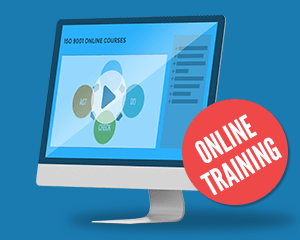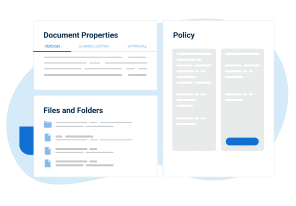Clauses 7.2 and 7.3 of ISO 9001:2015 are dedicated to training, competence, and awareness, and the 2015 revision will include the same terms and requirements. The importance of competence and awareness is pretty self-explanatory; after all, it doesn’t matter how good your processes and documentation are – if people aren’t aware of what exists, then your Quality Management System (QMS) will not be effective. We have examined ISO 9001 Training material in this previous blog: How to create it, what it should contain, but for the moment let us concentrate on competence and awareness.
Competence and awareness: Where to start
Not everyone in your organization needs to know every word of the ISO 9001 standard, and some schools of thought suggest that not everyone even needs to read the standard. I personally disagree with that. Whenever I start an ISO 9001 implementation process with an organization, I begin with an implementation training session, which I normally end by asking everyone to read the standard, where applicable according to the size of the company, and sign to provide evidence for their training record that they have done so. In larger organizations, this may be limited to the project team, of course. I believe, where practical, that this is fundamental; after all, how can you hope to achieve compliance and excellence against any standard if some team members are not fully aware of what the standard requires? Any employees who start with the organization during the process are asked to do likewise. So, that gets us started, but what now?
Competence and awareness: How to maintain
Whether you are on your journey toward accreditation, or simply trying to maintain your QMS after a successful audit, you need to ensure that competence and awareness are at the forefront of your thoughts. There is no prescribed way to achieve this, but here are some ideas that may suit your organization:
- Create a periodic newsletter to keep your employees informed by email.
- Ask your production and quality managers if you can hold a 5-minute update at the regular quality and production meetings to bring first-hand updates to the teams.
- Create a “fun” questionnaire for staff to test their ongoing knowledge – schedule and plan your training on the basis of where you perceive the gaps to be.
- Incorporate the latest news about your ISO progress onto the company’s visual displays in the reception area.
- Ensure that the organization’s leaders are involved in the communications, which you can read more about this in the blog: How to comply with new leadership commitments in ISO 9001:2015.
- Critically, ensure that you record your evidence of training and communication in the Training Matrix to show that this has taken place on an ongoing basis.
You will be able to estimate what measures need to be taken to ensure that competence and awareness are at acceptable levels, depending on your own knowledge of your organization. Again, in terms of any changes in legislation (such as the forthcoming changes with the 2015 standard), ensure that the details are communicated, any questions answered, and training evidence recorded.
Competence and awareness: Evidence required?
If you are ensuring that competence and awareness are at an acceptable level during your audit preparation process, then you will need to provide evidence of the work you have done to facilitate this, as mentioned above. Providing the auditor with documented evidence as discussed previously is vital, but a good auditor will quickly assess your staff’s knowledge and the importance they attach to the ISO 9001 process itself simply by talking to them during the audit. Therefore, it is important that you provide the guidance and knowledge to ensure that the workforce are educated and focused on the important aspects of the QMS and the 9001 standard. Given that knowing the objectives, expectations, and requirements of the standard are the fundamental starting point, there can be no continual improvement without competence and awareness, and remember – no continual improvement means no compliance at all.
Click here to access ISO 9001 online courses from Advisera, a leading online provider of ISO 9001 training.

 John Nolan
John Nolan 



